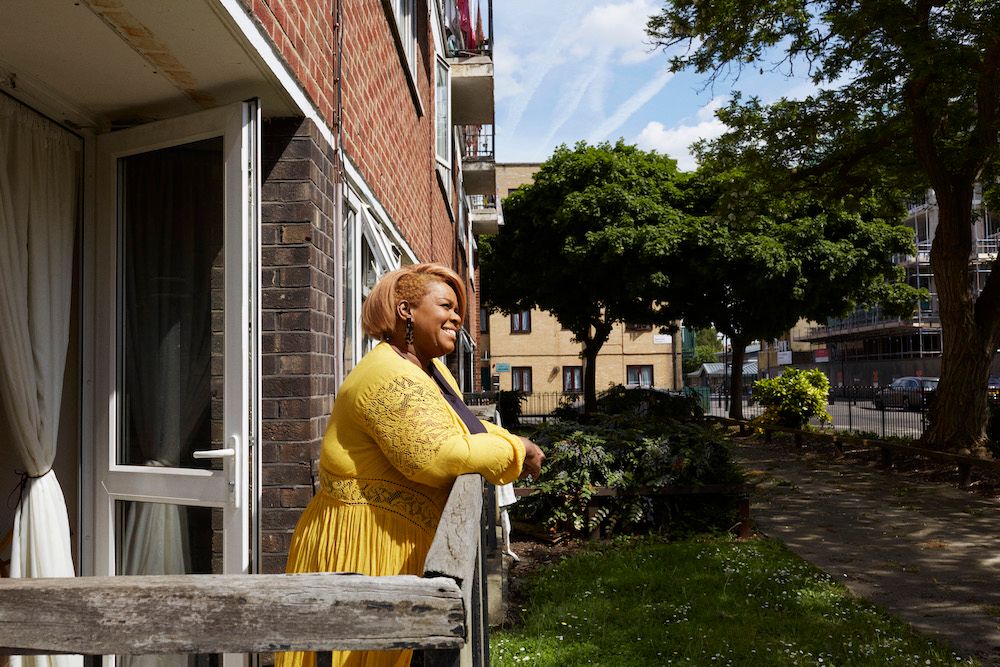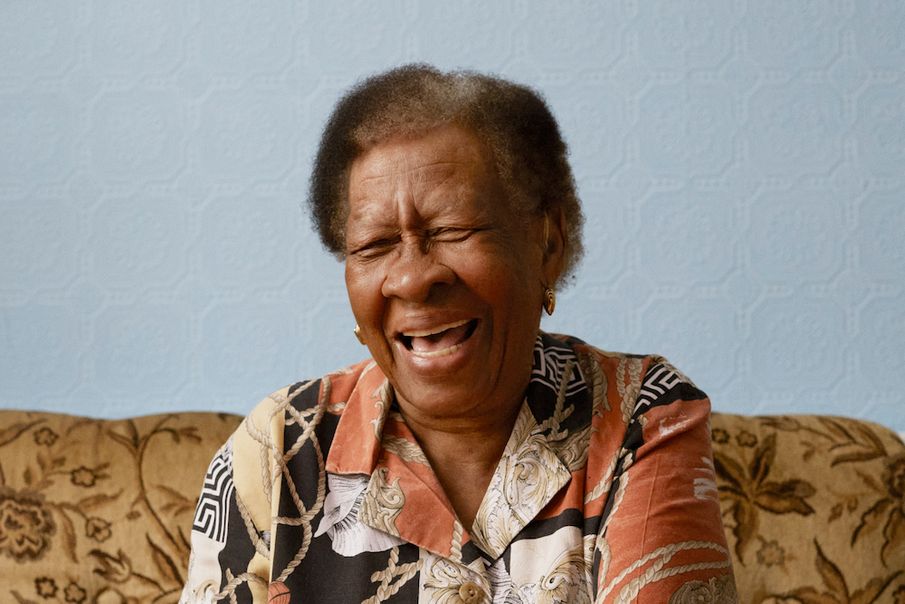We speak to Jenny Lewis, the portrait photographer who captured images of 100 people from ages 0–100, about the things ageing teaches us about life
Aroko is a one year old, and doesn’t have much to say. “Daddy.” reads the quote next to his portrait – the second in a lineup of photographs spanning the ages 0–100. The collection is the latest endeavour by portrait photographer Jenny Lewis, who has spent the past three years capturing people in her local community of Hackney, in London – the results published in a book, One Hundred Years: Portraits of a community aged 0–100. On the pages, next to striking, candid shots, subjects share revealing quotes and short stories from their lives, each one as touching as the next.

Aroko, aged 1 captured by Jenny Lewis
“I had spent five years working with women the day they had a baby, another five years photographing artists in their studios, and I suppose I lifted my head from these two long-term projects and wondered what else was going on at the other two ends of the timeline,” says Jenny, as she points to where the project began. “Looking back, I may have also been questioning my own mortality, and the vulnerability of being human. A few close friends my age had died of cancer, and my dad had been very ill. I also had come to terms with my own autoimmune disease, rheumatoid arthritis, so I think I may have just wanted to figure out what was possibly coming next, and to reflect on what had passed. I’m in my late 40s now, so it felt like a good time to look around and find out how other people were managing.”
It’s a natural journey, one that many people may be able to relate to – when we experience bereavement, trauma, and grief, we might find ourselves reflecting on our lives, our priorities, and our hopes, desires, and goals. A sentiment that is perfectly, and simply, captured by Jenny’s 49-year-old subject Shana.

Shana, aged 49 captured by Jenny Lewis
“I’ve had five brain surgeries. I chose to do life. For my children, for me, for people around me, I chose to do life. I have found that by doing so, life is great,” she says.
“It seems it really isn’t about age,” Jenny explains, when asked what the process of creating One Hundred Years taught her. “Everyone is on a unique journey, and at different stages at different times. But I was surprised, I suppose, at how interested and interesting the older subjects were – and at their enjoyment of life – as much as the youngsters surprised me at how articulate they could be, and their understanding of who they were at such an early age. I felt you could learn so much from anyone. People are always so much more than you might think.”
“I’m happiest when hanging out with my best mate, Stanley,” reads the quote next to 14-year-old Arran, who is just one of many examples of such insight. “The more you’ve been through, the harder it gets to carry alone, and when you have someone that knows you as well as me and Stanley know each other, you can share that weight.”
"Their lives can move from extreme arcs of happiness to sadness, and the other way round, but they do find a way through it"
That gentle resilience in Arran’s example is a theme Jenny quickly began to spot throughout her subjects. “Their lives can move from extreme arcs of happiness to sadness, and the other way round, but they do find a way through it,” she says. “Some of the stories are of strength, or difficult childhoods, but seeing the joy that can be found later was incredibly inspiring. The strength of the project is the people in it, but I didn’t know what they were going to talk about till we started talking, which made me realise there’s always something bubbling underneath the surface.”
When asked if she had a favourite subject, Jenny’s answer was a firm “absolutely not”. For her, they all came together to build something stronger: “The portrait of a community, with 100 faces, but all part of the same thing.

Leo, aged 25 captured by Jenny Lewis
“Photographing and interviewing someone is quite an intimate act. Working on this series, I really got a sense that there are no strangers, just people you haven’t had the time to get to know yet,” Jenny says. “I love spending time with new people, and seeing them open up and share a little of themselves. I enjoy the listening, and they seem to enjoy the collaboration. I want more of this, please… More human interaction. It’s the energy we need to stay interested in each other. The more you talk to people you don’t know, the more it feels natural, and what’s better than a conversation where you have no idea where it will lead?”
But as well as the profound, the philosophical, and the unexpected, the seemingly mundane aspects of the human experience shine through emotively, as demonstrated by many of the subjects, including 88-year-old Hyacinth: “I used to love dancing. I used to go to six dances in one night and then not get up till three on a Sunday. Then I reached an age where I say, this is not for me. Take it easy.”
Life is often far from linear. We go down side paths, make leaps forward, and perhaps take steps back again. In One Hundred Years, each story comes together to create one journey, a human journey, and Jenny wants to take readers there – as she did herself.
“Listen to the voices, stories, and opinions that may trigger memories and reflections of your own lives, or open up new ways of thinking,” Jenny says. “I want to encourage people to drop the prejudices we all carry and how we guess what people are like from just looking at them – you have to make time to listen.”
Hero Image | Hyacinth, aged 88 captured by Jenny Lewis
One Hundred Years: Portraits of a community aged 0–100 by Jenny Lewis (Hoxton Mini Press) is out now.
To connect with a counsellor for support, or to discuss ageing, trauma or life experiences, visit counselling-directory.org.uk


Comments